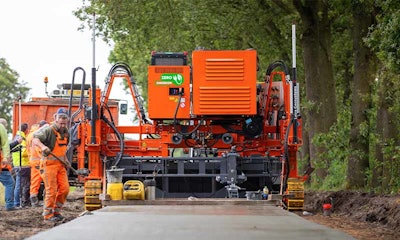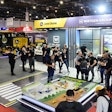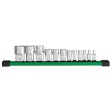
Leica Geosystems and Roos Groep has achieved a milestone in their collaboration to develop the world’s first fully electric slipform paver, guided by Leica Geosystems’ 3D machine control solution.
Roos Groep has collaborated with various partners to create an emission-free slipform paver that integrates equipment technologies. This machine enables fossil fuel-free operations while prioritizing safety.
The machine integrates Leica Geosystems’ MC1 3D machine control solution. The system features which include dual GNSS for heading and a total station for precise height control, enable millimeter accuracy and simplified installation. Utilizing machine control on top of a zero-emission slipform paver reduces operational downtime.
In addition to Leica Geosystems providing a 3D machine control systems, other collaborators included Statec for design and drafting, Staad-Fusion for batteries, Hightide for hydraulic components, Hydrocan Engineering for automation and Degra for electro-hydraulic components. Structural elements were provided by TJP Bladel and Van de Brand Metaal, with Ingenieursbureau Van Asseldonk offering advisory services and CE certification.
“Roos Groep envisions a future where nearly all concrete pavement jobs are executed electrically, significantly reducing the construction sector’s carbon footprint,” said Tom Roos, CEO of Roos Groep. “Through innovation, collaboration with industry partners, and a commitment to environmental friendliness, we are driving a green revolution in construction.”
“Our partnership with Roos Groep on this groundbreaking project highlights the potential of integrating advanced 3D machine control technology with sustainable construction machinery,” said Neil Williams, machine control director at Leica Geosystems. “This innovation sets a new standard for precision and sustainability in the industry.”
 Leica Geosystems
Leica Geosystems
The first mission of the electric slipform paver was to create a bicycle path in the municipality of Reusel.
















